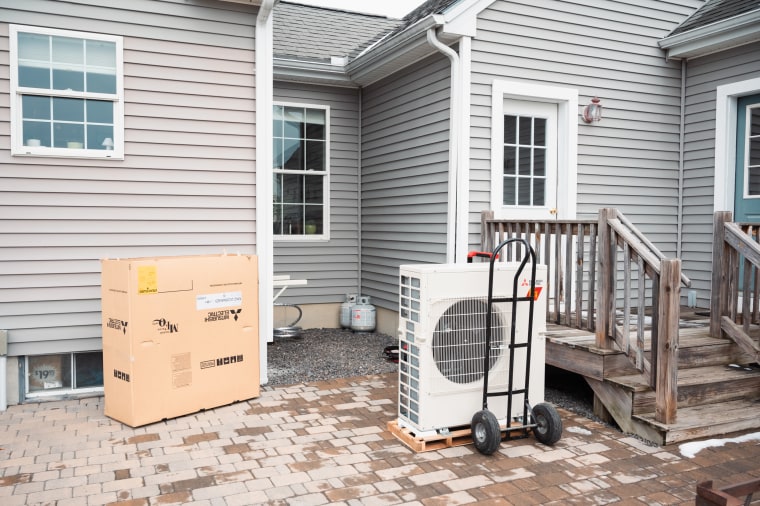2022 was a big year for the humble heat pump.
In the U.S., more people bought heat pumps for their homes than traditional fossil-fuel furnaces. In Poland, the market for heat pumps more than doubled. China is installing more than any other country.
Based on refrigeration technology that’s more than 200 years old, the heating contraptions have gained popularity thanks to their green footprint and low cost to operate.
“After maybe buying an electric vehicle or taking the bus more often or carpooling to reduce their travel-related emissions, maybe people hear about heat pumps, which is the next-biggest-impact thing they can do personally — installing a heat pump and reducing their emissions from heating their home,” said Neil Kolwey, a building electrification specialist at the public-interest organization Southwest Energy Efficiency Project. “And hopefully they save a little money on their heating bill at the same time.”
Heat pumps powered by electricity convert energy to heat more efficiently than furnaces and propane or electrical resistance heaters, said Ram Narayanamurthy, the deputy director for the Energy Department’s Building Technologies Office.
The standard heat pump delivers three to four times more heat per unit of energy than an electrical resistance heater or a furnace, which burns natural gas to release heat, he said.
A heat pump works similarly to a refrigerator. Inside the heat pump, a refrigerant is placed under high pressure, which converts it into a pressurized, superheated gas, which is then condensed using electrical power and released into the room as heat, he said.
Kolwey said heat pumps are an ideal alternative to fossil-fuel-based heating. They use less energy overall and can even be coupled with renewable energy to produce zero-carbon heat.
If you compare an efficient gas furnace to a good heat pump system, a home using the heat pump would reduce its greenhouse gas emissions by about 55% over 15 years, Kolwey said.
However, heat pumps are effective only at temperatures above minus-20 degrees Fahrenheit — Kolwey recommends having backup furnaces in extreme conditions. Installing heat pumps can also be difficult because of supply chain issues and a lack of trained technicians, he said.
Narayanamurthy said that across the U.S., heat pumps already account for more than half of all residential heating sales. Heat pumps are popular in the warmer South, but they are gaining momentum in colder regions in the Northeast and the Northwest.
“The proportion of heat pumps has been slowly growing over the last 10 years,” Narayanamurthy said. “2020 was the first year when the industry sold more heat pumps than natural gas furnaces.”
Under the Inflation Reduction Act, the federal government contributed $369 billion for the development of clean energy and energy-efficient technologies. The Inflation Reduction Act offers tax credits to cover 30% of the upfront costs of heat pumps, up to $2,000 a year, said John Agan, a policy analyst at the Energy Department.
Through the High-Efficiency Electric Home Rebate Act included in the Inflation Reduction Act, low- and moderate-income homes can also receive $8,000 to install heat pumps.
“These incentives for households, combined with investments in manufacturing facilities using Inflation Reduction Act funding, are part of a multi-pronged approach to help promote greater adoption of heat pumps, solar panels and other home efficiency and clean energy products,” Agan said.
The costs to heat your home using heat pumps are similar to those of traditional heating methods. American households that switch to heat pumps can save up to $300 a year, said Yannick Monschauer, an economist and energy analyst at the International Energy Agency.
“The average household or business that uses a heat pump spends less on energy than those using a gas boiler,” he said. “And the savings offset the higher upfront cost of heat pumps in many markets today, including in the U.S., even without subsidies.”
In Europe, which relies heavily on Russian natural gas, heat pumps can save up to $900 a year because of recent energy insecurity and energy price spikes amid Russia’s war in Ukraine, Monschauer added.
CORRECTION (February 16, 2023, 11:12 a.m. ET): A previous version of this article misspelled the last name of a building electrification specialist at the public-interest organization Southwest Energy Efficiency Project. He is Neil Kolwey, not Kowley.
